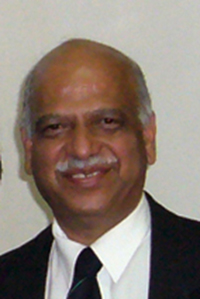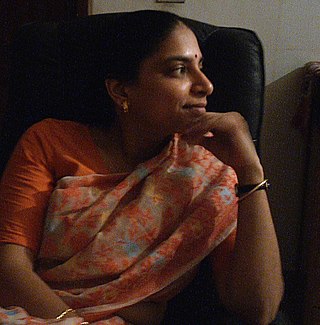
Condensed matter physics is the field of physics that deals with the macroscopic and microscopic physical properties of matter, especially the solid and liquid phases that arise from electromagnetic forces between atoms and electrons. More generally, the subject deals with condensed phases of matter: systems of many constituents with strong interactions among them. More exotic condensed phases include the superconducting phase exhibited by certain materials at extremely low cryogenic temperatures, the ferromagnetic and antiferromagnetic phases of spins on crystal lattices of atoms, the Bose–Einstein condensates found in ultracold atomic systems, and liquid crystals. Condensed matter physicists seek to understand the behavior of these phases by experiments to measure various material properties, and by applying the physical laws of quantum mechanics, electromagnetism, statistical mechanics, and other physics theories to develop mathematical models and predict the properties of extremely large groups of atoms.

A chemist is a graduated scientist trained in the study of chemistry, or an officially enrolled student in the relevant field. Chemists study the composition of matter and its properties. Chemists carefully describe the properties they study in terms of quantities, with detail on the level of molecules and their component atoms. Chemists carefully measure substance proportions, chemical reaction rates, and other chemical properties. In Commonwealth English, pharmacists are often called chemists.
The following outline is provided as an overview of and topical guide to chemistry:

Physics is the natural science of matter, involving the study of matter, its fundamental constituents, its motion and behavior through space and time, and the related entities of energy and force. Physics is one of the most fundamental scientific disciplines, with its main goal being to understand how the universe behaves. A scientist who specializes in the field of physics is called a physicist.

Theoretical chemistry is the branch of chemistry which develops theoretical generalizations that are part of the theoretical arsenal of modern chemistry: for example, the concepts of chemical bonding, chemical reaction, valence, the surface of potential energy, molecular orbitals, orbital interactions, and molecule activation.

John Clarke Slater was an American physicist who advanced the theory of the electronic structure of atoms, molecules and solids. He also made major contributions to microwave electronics. He received a B.S. in physics from the University of Rochester in 1920 and a Ph.D. in physics from Harvard in 1923, then did post-doctoral work at the universities of Cambridge (briefly) and Copenhagen. On his return to the U.S. he joined the physics department at Harvard.

Tata Institute of Fundamental Research (TIFR) is an Indian Research Institute under the Department of Atomic Energy of the Government of India. It is a public deemed university located at Navy Nagar, Colaba in Mumbai. It also has campus in Bangalore, International Centre for Theoretical Sciences (ICTS), and an affiliated campus in Serilingampally near Hyderabad. TIFR conducts research primarily in the natural sciences, the biological sciences and theoretical computer science.
The Jawaharlal Nehru Centre for Advanced Scientific Research (JNCASR) is a multidisciplinary research institute located at Jakkur, Bangalore, India. It was established by the Department of Science and Technology of the Government of India, to mark the birth centenary of Pandit Jawaharlal Nehru, the first prime minister of independent India. It is considered one of the most prestigious research institutes in India. In 2019, JNCASR was ranked #7 among the world's top ten research institutes by Nature journal in a normalised ranking of small research institutes with high quality output.

The Indian Academy of Sciences, Bangalore was founded by Indian Physicist and Nobel Laureate C. V. Raman, and was registered as a society on 27 April 1934. Inaugurated on 31 July 1934, it began with 65 founding fellows. The first general meeting of Fellows, held on the same day, elected Raman as president, and adopted the constitution of the Academy.

Shridhar Ramachandra Gadre is an Indian scientist working in computational quantum and theoretical chemistry.
IOP Publishing is the publishing company of the Institute of Physics. It provides publications through which scientific research is distributed worldwide, including journals, community websites, magazines, conference proceedings and books. The Institute of Physics is a scientific charity devoted to increasing the practice, understanding and application of physics. Any financial surplus earned by IOP Publishing goes to support physics through the activities of the Institute.
David Adler was an American physicist and Massachusetts Institute of Technology professor. In condensed matter physics, Adler made significant contributions to the understanding of transition-metal oxides, the electronic properties of low-mobility materials, transport phenomena in amorphous materials, metal-insulator transitions, and electronic defects in amorphous semiconductors.
Sourav Pal (1955-) is an Indian theoretical chemist, former professor of chemistry at IIT Bombay, and former director of the Indian Institute of Science Education and Research, Kolkata. He was a director of the CSIR-National Chemical Laboratory in Pune and an adjunct professor at the Indian Institute of Science Education and Research, Pune.
The following outline is provided as an overview of and topical guide to applied science:

Charusita Chakravarty was an Indian academic and scientist. She was a professor of chemistry at the Indian Institute of Technology, Delhi since 1999. In 2009 she was conferred Shanti Swarup Bhatnagar Prize for Science and Technology in the field of chemical science. In 1999, she received B.M. Birla Science Award. She was an Associate Member of the Centre for Computational Material Science, Jawaharlal Nehru Centre for Advanced Scientific Research, Bangalore.
Rama Govindarajan is an Indian scientist specialized in the field of fluid dynamics. She previously worked at the Engineering Mechanics Unit of the Jawaharlal Nehru Centre for Advanced Scientific Research from 1998 to 2012 and as a professor at the TIFR Hyderabad Centre for Interdisciplinary Sciences from 2012 to 2016. As of 2019 she is working as a professor at International Centre for Theoretical Sciences (ICTS), Bengaluru. Govindarajan is a recipient of the Shanti Swarup Bhatnagar Award for the year 2007.

Shobhana Narasimhan is an Indian academic who is Professor of Theoretical Sciences at the Jawaharlal Nehru Centre for Advanced Scientific Research in Bangalore, India. Her main area of interest is computational nanoscience. Her research examines how the lowering of dimensionality and reduction of size affect material properties. She is an International Honorary Member of the American Academy of Arts and Sciences, and a Fellow of the Indian Academy of Sciences the National Academy of Sciences, India and the American Physical Society.
The Joint Entrance Screening Test (JEST) is a national entrance test in physics and theoretical computer science conducted annually in India. The test is utilised by various Indian public research institutes to shortlist candidates for admission to PhD and Integrated PhD programmes with fellowships in theoretical computer science and areas in physics. JEST has been recognised as a National Eligibility Test (NET) by the Science and Engineering Research Board (SERB).
Rahul Pandit is an Indian condensed matter physicist, a professor of physics and a divisional chair at the Indian Institute of Science. Known for his research on phase transitions and spatiotemporal chaos and turbulence, Pandit is an elected fellow of the Indian Academy of Sciences, Indian National Science Academy and The World Academy of Sciences. The Council of Scientific and Industrial Research, the apex agency of the Government of India for scientific research, awarded him the Shanti Swarup Bhatnagar Prize for Science and Technology, one of the highest Indian science awards, for his contributions to physical sciences in 2001.
Bulbul Chakraborty is the Enid and Nate Ancell Professor of Physics at Brandeis University. She is recognized for her contributions to soft condensed matter theory studying systems far from equilibrium, such as granular materials, amorphous systems, and statistical physics. She is an elected American Physical Society and American Association for the Advancement of Science fellow.









